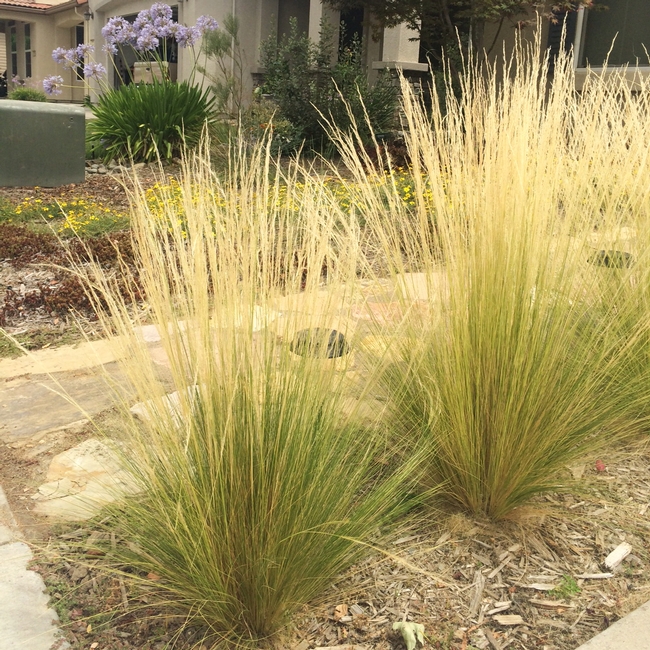Mexican Feather Grass (Nassella or Stipa tenuissima) is a wildly popular ornamental grass used by home gardeners and landscape design professionals. Mexican Feather Grass is loved for its graceful, delicate and fine texture – it grows out in a cascade like a beautiful fountain. Plus it is extremely drought tolerant adding to its allure. It's no wonder this ornamental grass has been enthusiastically used in home landscapes. But - don't be fooled by this invasive beauty!

Mexican Feather Grass was recently added to PlantRight's list of invasive plants in California. It produces tens of thousands of seeds, which are dispersed by wind, water or contaminated soil – as well as via automobiles and animal droppings. The seed-bank can persist for more than four years and the plant commonly self-sows in California. Mexican feather grass is capable of overcoming native plants and animal species once it becomes established.
It crowds out pasture grass species as well as native grasses in coastal areas and is found in all landscapes, including: urban spaces, agricultural areas, forests, open grasslands, riparian zones, disturbed land, and shrublands.
Working to Stop Distribution
PlantRight works with leaders in the nursery industry, conservation groups, plant scientists and professional landscapers to find cost-effective ways to stop the sale of invasive plants and Mexican feather grass is at the top of their list. PlantRight is currently working with one of the top growers of Mexican feather grass to stop the sale of 14,000 plants that are ready to ship to retailers. These 14,000 plants are capable of producing more than 980 million seeds each year.
PlantRight Recommended Alternatives:
- Blue grama grass (Bouteloua gracilis 'Blonde Ambition')
- Priarie dropseed (Sporobolus airoides)
- Mexican deer grass (Muhlenbergia dubia)
- Pink Muhly (Muhlenbergia capillaris, esp. 'White Cloud')
- Autumn moor grass (Sesleria autumnalis)
To learn more about Plant Right and how they are working to stop the distribution of Mexican feather grass, visit www.plantright.org.
